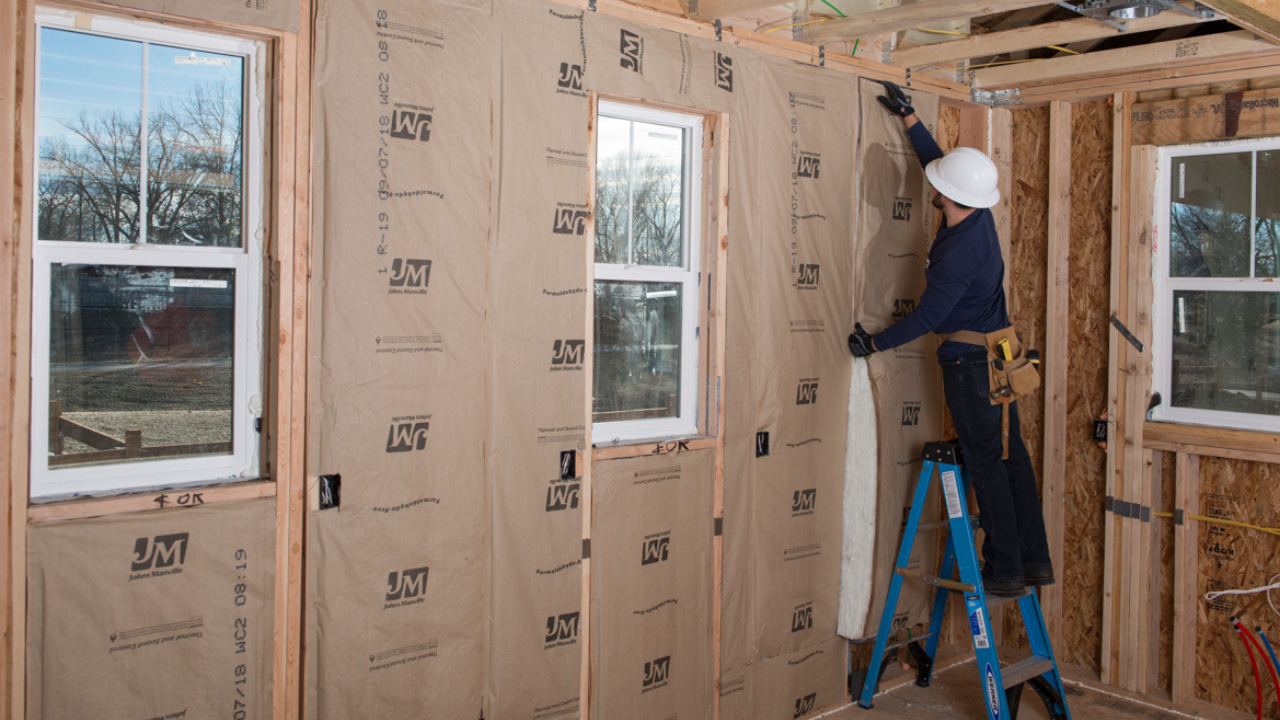Do I need a vapor retarder in my basement? What’s the difference between a vapor retarder and a vapor barrier? What about facings – are those the same thing? What on earth is a “perm”?
We know there are a lot of confusing terms when it comes to building insulation and moisture control, so let’s drill down on the specifics of what each is and how to use these products.
What are vapor retarders and vapor barriers, and how are they different?
A vapor retarder or barrier is part of a moisture control strategy for a home. They are materials that reduce the rate at which water vapor can move into building assemblies, like walls, where it can then condense into liquid within the structure. If enough liquid accumulates inside of exterior walls, roofs or crawlspaces, rot and decay can cause significant damage.
Various retarders are available including rigid foam insulation, reinforced plastics, aluminum and stainless steel, which are all relatively resistant to water vapor diffusion. Other thinner membrane-type retarders include polyethylene sheeting and aluminum- or paper-faced fiberglass roll insulation.
Vapor barriers are similar to retarders, except they pass stricter standards and are meant to prevent vapor diffusion, whereas retarders slow vapor diffusion.
A building material’s permeance – known as permeability – is scored through a rating system, known as a “perm.” Low perm ratings mean that it will be difficult for water vapor to get through the building material, whereas a higher perm rating means there is less resistance. To be considered a vapor barrier, a material must pass the ASTM E96 test at 0.1 perm or less. To be considered a vapor retarder, a material must pass the ASTM E96 test at between 0.1 and 1.0 perm.
What is facing?
In building insulation, facings are added to fiberglass insulation to serve as a vapor barrier or retarder. Kraft (paper) has a perm rating of 1, meaning JM’s kraft-faced fiberglass insulation has a vapor retarder. Both foil and FSK facings have a perm rating of 0.05, so they are vapor barriers.
Vapor isn’t just an issue for building insulation. Other types, including mechanical and industrial, also rely on various vapor retarder and vapor barrier materials to protect insulation systems.
Where are vapor retarders used (or not)?
In many U.S. climate zones, vapor retarders are important in helping to control moisture in locations such as basements, crawlspaces, slab-on-grade foundations and more. How, where and whether you need a vapor retarder depends on the climate zone as well as the construction of your home.
In southern U.S. climate zones (like climate zones 1-3), a facer is not typically used on fiberglass insulation because moisture tends to move from the outside in, and having a facer could cause the vapor to become trapped behind the facer, causing issues for the homeowner. In cooler climate zones (4-8) a facer is recommended because moisture generally moves from the inside out, so retarders or barriers would help keep moisture in the conditioned space.
One example is kraft-faced fiberglass insulation, which helps prevent mold and mildew in homes in cooler climates. It can be used in exterior above-grade walls, with the facing toward the conditioned space. This helps slow the process of moisture moving from the inside out, so that walls don’t retain moisture.
How can I determine my specific needs or requirements?
Consult the most current edition of the International Residential Code (IRC) and International Building Code (IBC), as well as your local Authority Having Jurisdiction (AHJ) to determine vapor retarder requirements for your project.
And check out this informational page, part of JM’s home insulation section, for useful information about vapor retarders.

